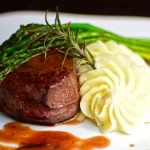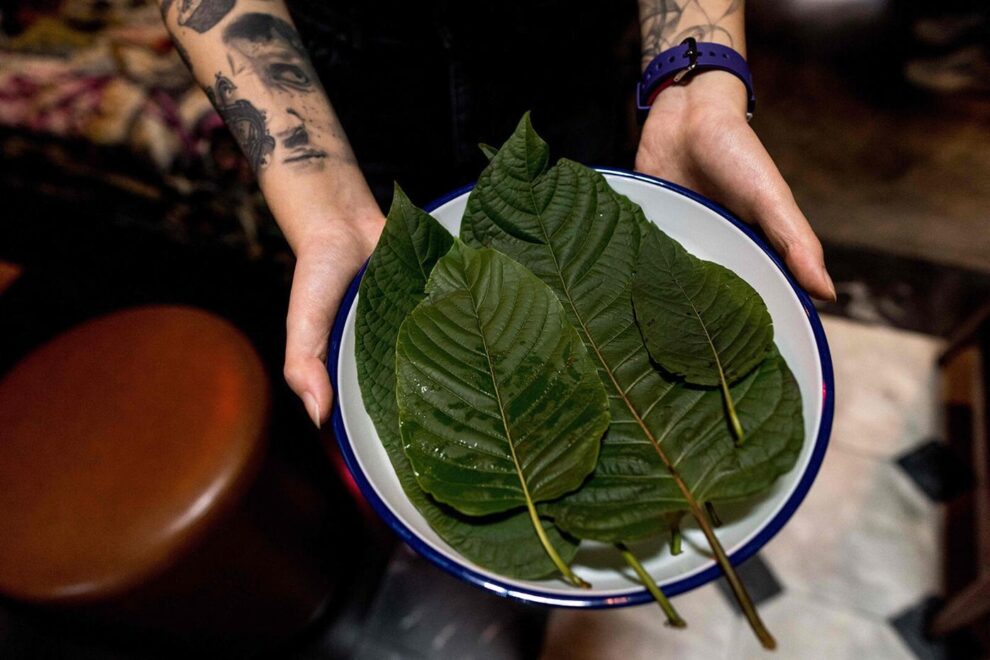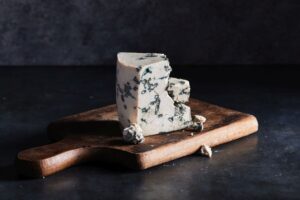When Krista Marquick discovered kratom, it filled a hole in her life that quitting alcohol had left — kratom is often served at specialized bars, so it provided a way to socialize with friends and unwind after work without, she thought, the risk of addiction.
Within a few months, Marquick found herself with a brand new addiction that left her feeling, as she put it, “out of control.” On bad days, she spent $80 on kratom. She bought $10 kratom drinks and $20 concentrated extracts, drinking them when she woke up, during her lunch hour and after work. Some nights, she wouldn’t be able to sleep because of withdrawals, leaving her house at midnight to get her fix.
“Your tolerance builds up so fast on kratom,” Marquick said. “So you’re constantly spending more and more money, and you’re having to use more and more kratom.”
Kratom is a drink extracted from a plant native to Southeast Asia that’s become increasingly popular in the US for its pleasant, alcohol-free buzz. It’s known to be an energy booster, mood enhancer and pain reliever. The product is sold online, in smoke shops, convenience stores and, perhaps most notably, at bars popping up around the country that sell a different plant-based beverage, kava. While kava doesn’t have the same addictive properties, the bars that sell it have become a common entry point to kratom for consumers.
And while kratom has gained a reputation for producing an innocent buzz, it can have addictive, opioid-like properties, according to the National Institutes of Health — and in some extreme cases, it has even led to fatal overdoses. As it has grown in popularity, so too have concerns over its risks. Some states are trying to regulate kratom, but there’s been little regulatory action on the federal level. The US Food and Drug Administration warns consumers against using kratom, suggesting that it’s unsafe and there are no approved uses for it. The US Drug Enforcement Administration has listed it as a “drug of concern.”
Oliver Grundmann, a professor at the University of Florida who has studied kratom since 2016, said the adverse effects of the plant in low doses typically result in little more than mild stomach problems. But more concentrated forms are associated with addiction, as well as liver and cardiovascular toxicity, he said. Still, he said, that so far there have been no rigorous clinical studies on how much kratom can lead to dependency. In other words, the full effects of kratom are still unknown.
Kratom made its way into the zeitgeist through kava, which is also frequently pitched as an alcohol alternative. As more people have cut back or quit booze, kava bars took off as a happy hour replacement. Over the last decade, the number of kava bars has grown about 30 to around 400, according to data collected by Jimmy Price, a moderator for the kava subreddit and owner of an online kava community page. More recently many of those bars have also begun selling kratom, introducing patrons like Marquick to the drink. While kava and kratom are two completely different substances — the former without risk of addiction, the latter with far greater risks — because they are often sold in the same places, consumers can view them as similar.
Jeff Bowman, a major kava distributor who opened one of the first US kava bars in the early 2000s, said that for many bars like his, kratom sales have far outpaced kava. Bowman said he had to add kratom to his offerings when his patrons left for a competitor who introduced it.
“Kava is a kratom-dominated industry,” said Bowman. “None of the kava bars in the United States sell enough kava to survive.”Because kava is generally considered non-addictive, it’s apparently not as good for business.
But the same qualities of kratom that keep people coming back also make it more dangerous. Poison control calls that mention kratom tripled from 2017 to 2021.
In its raw plant form, kratom contains about 2% mitragynine, a chemical compound that binds to opioid receptors, according to Grundmann. Kratom products on the market can contain more than 20 times that amount. Grundmann points to a spate of wrongful death lawsuits that cite a higher than normal use of kratom.
In July, a 12-person jury awarded $2.5 million to the family of Patrick Coyne, 39, who died in his home in Oregon after consuming a large amount of kratom. The product Coyne used before his death was marketed as a “miraculous cure-all with ‘absolutely’ no negative health effects, and no risk of overdose,” according to the lawsuit.
A class-action lawsuit was filed against 7-Eleven and Botanic Tonics, the producer of a popular kava tonic known as Feel Free. Described as a “feel-good wellness tonic that’s made with kava and other ancient plants,” Botanic Tonics misleadingly fails to disclose in its marketing materials that Feel Free’s main ingredient is not kava, but kratom, according to the lawsuit.
“We will vigorously defend our product in court,” Botanic Tonics Founder JW Ross said. “Botanic Tonics products are safe and manufactured, marketed, and distributed to the highest industry standards.” At present, the product’s ingredient list does include kratom, but at least some marketing materials still do not. The subreddit r/QuittingFeelFree, created earlier this year, has more than 900 members, and acts as a forum for users to share their experiences struggling with the tonic. Bethany Stevens, a 41-year-old mother of two who goes by the username BeeStee13, posted in early July: “1 week free from the free fall of Feel Free today.” Now, it’s been more than three months since she last touched the tonic.
At her most addicted point, Stevens said she drank eight bottles of Feel Free daily. Like Marquick, Stevens said she was so restless that she would go to the store in the middle of the night to calm her nerves.
“My anxiety was so crippling,” Stevens said. “I needed more just to be able to sleep.”
Botanic Tonics said that the appropriate serving size for its beverages is labeled. “We clearly label our products and website to advise on proper consumption behavior, recommending that customers consume no more one serving (half bottle of tonic) at a time and no more than two servings (one bottle of tonic) per day,” the company said in a statement. “Recommended use and caution statements can be seen on the back of every tonic bottle and on every page of our website.” The DEA tried to curtail kratom usage by putting it in the highest tier of restricted drugs in 2016. But public backlash, combined with lobbying efforts from groups like the American Kratom Association, killed those efforts. The FDA and DEA both declined to comment.
In several countries like Japan and Poland, its use has been banned or restricted.
Mac Haddow, the kratom lobbying group’s senior fellow in public policy, said that kratom-related deaths are tied to multiple drug use or unrelated health conditions. The National Institute on Drug Abuse echoes some of Haddow’s perspective, saying that only a very small number of deaths have been linked to kratom products.
“None of it was related to kratom alone,” Haddow said.
One of the reasons that it has been difficult to ascertain how dangerous kratom actually is, said Grundmann, is that it’s often used alongside other substances. That can make it hard to pinpoint the role that kratom may have played in a death. The World Health Organization has said there is not sufficient evidence to add kratom to its list of internationally controlled substances, though it’s continuing to monitor the situation.
The goal of the kratom lobbying group, according to its website, is “protecting the rights of all Americans to legally consume safe kratom.” In a bid to keep it on the market, the kratom lobby is advocating for limited regulations. In June, Florida joined several other states in passing the Kratom Consumer Protection Act, which makes it illegal to sell kratom to those under the age of 21. Florida’s bill followed similar ones passed in Virginia, West Virginia and Texas this year. By creating limited regulations — akin to those for tobacco products — the lobby hopes to create a legal marketplace for the substance. The lobbying group estimates there are as many as 15 million kratom consumers and that the substance made $1.5 billion in sales in 2020, up from $1.3 billion in 2019.
But some lawmakers are taking a more critical eye to the substance. Alabama, Arkansas, Indiana, Vermont and Wisconsin have banned it altogether. Earlier this year, Missouri’s governor Michael Parson vetoed the state’s Kratom Consumer Protection Act, arguing that the bill conflicted with the FDA’s stance that kratom cannot be legally sold in the US as a drug product, a dietary supplement or food additive. Louisiana, meanwhile, has asked the state Department of Health to study acute and long-term adverse health events from kratom. The health department recommended that kratom be banned from general consumption in the state in 2019 and urged residents to heed the FDA’s warning.
Marquick has been kratom-free for more than a year now. But getting there was no easy road. She’s not sure whether she thinks it should be banned, but she does think it requires some regulation. “I was spending too much money every night. It was affecting my relationships,” she said. “It was comparable to another drug or alcohol at the end of my use.”
Source : Union Leader































